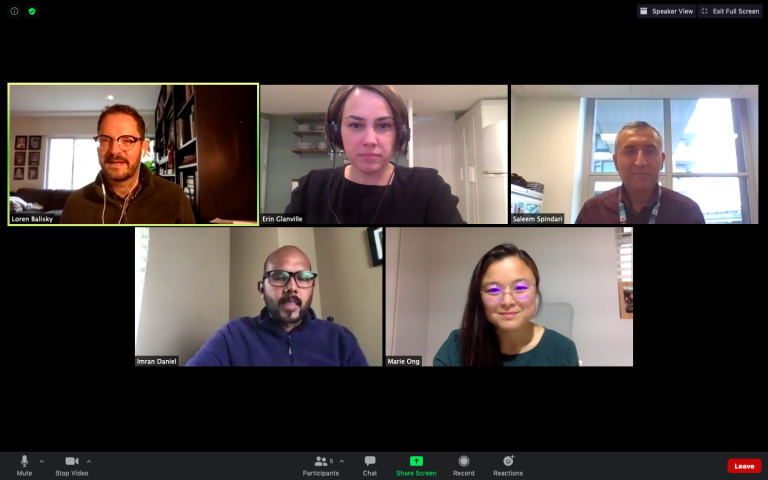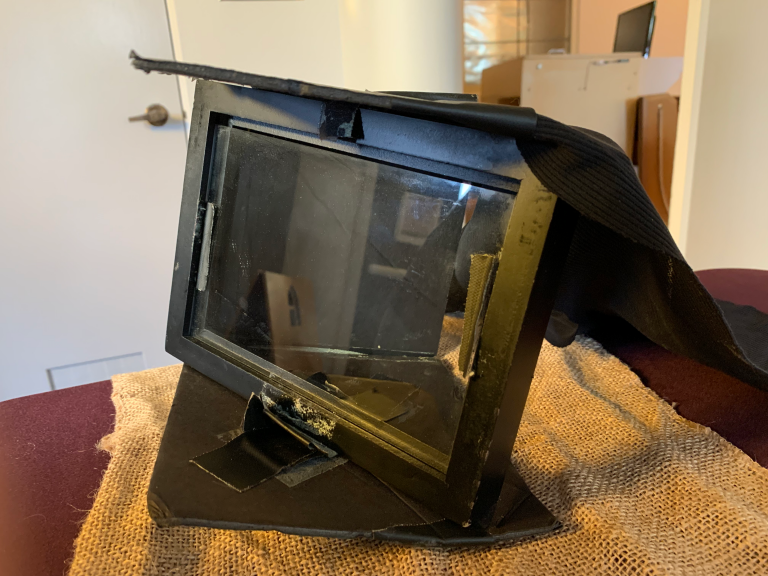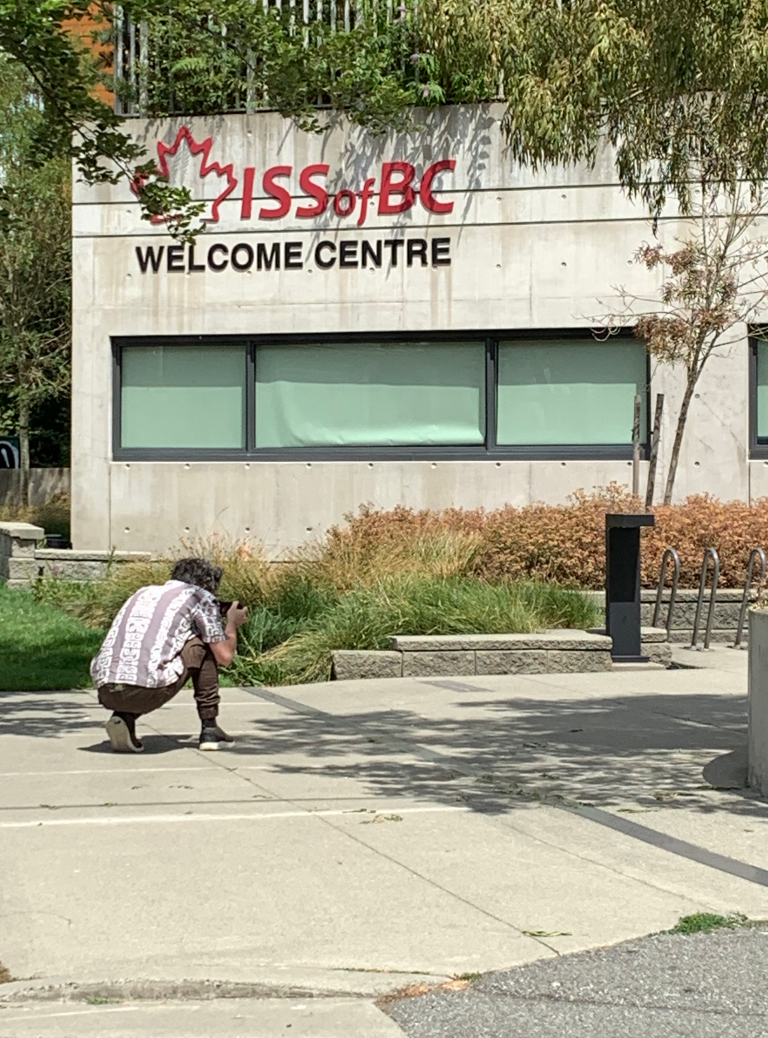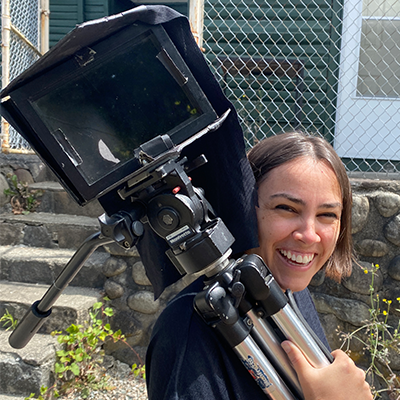October 5, 2021
Written by Heidi Rennert
Near the end of the documentary Borderstory, poet Juliane Okot Bitek offers a redefinition of “borders”: “The border is not a scary place. The border has so much possibility.” Over the course of 24 minutes, director Dr. Erin Goheen Glanville meditates on the meanings of “border” as a political and geographical issue in refugee and immigration rights. Through a series of interviews with refugees, activists, and scholars, Borderstory raises a series of questions about what borders mean for people with varying refugee experiences: Are borders safe places? For whom do borders exist? Do borders contain, keep out, or bring together?
[vimeo]https://vimeo.com/427545591[/vimeo]
Borderstory has posed these questions to audiences in over 20 educational courses across six continents. It has been screened or viewed nearly 2000 times, including once with the Public Humanities Hub in December, 2020. In 2021, Dr. Glanville was a runner up for the Public Humanities Hub’s Public Engagement Award, which was created “to honour individuals who have exhibited outstanding public humanities engagement in the past two years.”
Dr. Glanville has maintained a prolific track record in public scholarship and engagement during the last few years. During her PhD at McMaster University, Dr. Glanville began seeking opportunities to bridge her scholarship with communities involved in refugee support and activism. Her dissertation, she states, was “born of a desire to see these two conversations become mutually transformative.” Currently based in Vancouver, Dr. Glanville works as a filmmaker, educator, and writer. After completing her PhD, she held a SSHRC Postdoctoral Fellowship, through which she directed the project “Digital Storytelling as a Method for Refugee Dialogue in Canada” (2017-2019), in collaboration with Kinbrace Community Society, local artists, and people in the refugee support sector. The project continues in its latest iteration as Worn Words, a “listening project” and “online collection of multimedia educational materials.” Like Borderstory, Worn Words explores the meanings of words we use about refugees and immigration that have, for some, begun to lose their meanings; for others these words are worn and carried with them in their lived experiences. Part of her methodology, she describes, is to develop “a filmmaking praxis for open education resources that can support public dialogue on refugee discourse.”
The Public Humanities Hub reached out to Dr. Glanville to reflect on her process of doing public scholarship. Her answers have been lightly edited and follow below.
Public Humanities Hub: What does public scholarship mean to you? How do you define public scholarship? What do you value about public scholarship?
Erin Goheen Glanville: Public humanities takes a number of forms in my scholarly activities: I make educational media in partnership with community organizations, I contribute to refugee support sector events and consult on community-based research and for non-profits, I teach refugee narratives as public pedagogy in community education, and I bring community partners into academic conferences and courses. My hope is to produce deeper curiosity about refugee futures. In each of my projects, I aim to centre experiential expertise, to produce a collaborative living inquiry into the systems refugees navigate, to avoid pathologizing forced displacement, to consider with care the relational ethics of studying issues of precarity, and to use my training in postcolonial literary cultural studies to support experimentation with narrative forms of communication.
To me, public scholarship is about choosing projects based on relational responsibility, communicating the significance and benefits of our research for people outside our scholarly community, and leveraging the resources of the university to support the work that is already being done in communities. It’s not just about getting our research into public spaces; it’s about serving public conversations with the concrete resources of the university (funding, physical space, networks, reflective practices, etc).
Significantly, “public” has been associated often with citizen cultures, effectively excising refugee claimants and migrant communities from the concept of public dialogue. So, public scholarship in the area of refugee studies reminds us that it’s important in public-facing research to consider who we imagine “the public” to be and how the benefits of research can be mobilized to support equity.
On a personal note, before Covid, my kids and I attended a weekly dinner at Kinbrace Community Society. When you live connected to the community impacted by your research, it’s hard not to see scholarship as inherently public!

The pandemic didn’t get in the way of screening Borderstory. The planning committee met on Zoom to plan for the Refugees and Borders event.
PHH: What were some of the challenges presented by this project? How did you overcome them?
EGG: Two major challenges were funding and time. The majority of people receive information today through the video medium. But making creative media is expensive and time consuming. Doing community-engaged research creation was a slow process, and I had to adjust my expectations and timelines regularly. In the end, this challenge became an opportunity to experience the synergy that can happen when you submit your research agenda to a creative-partnered process, and funding came through in unexpected ways.
Many ethical challenges presented themselves throughout the project, interestingly––and especially––within the media production process. Editing interview footage to bring together diverse knowledges and to frame different modes of communication equally was a productive challenge.

Dr. Glanville built a device for interviewing: The “interatron,” which she and Flick Harrison made out of cardboard, tape, glass, and cloth. It creates a reflection in the glass through which they and the interviewee talk to each other, but the camera only catches the interviewee’s side of the conversation.
PHH: What did you learn during this project? How did you and your partners co-produce knowledge? Can you explain your collaborative process?
EGG: The co-production of knowledge happened at a few different levels. In the first place, I interviewed fifteen people for their expertise on refugee discourse. So we both produced and exchanged knowledge in the back and forth of the interview conversations. Secondly, I held brainstorming and feedback sessions with refugee support providers (many of whom have refugee experience as well) at several key stages in the filmmaking process. This meant the research process and the knowledge I was producing were regularly in flux. Thirdly, the artistic process itself was an experiment in co-producing knowledge. As I worked with local filmmaker Flick Harrison to record and edit the interviews, I was sensitive to the fact that cutting and stitching together a film was also going to determine what the viewers “learned.” Illustrator Andrea Armstrong, who is a part of the Kinbrace community,worked with me on storyboarding and animation, which were slow and recursive in order to account for the feedback process.
For example, the ending of the animation was changed entirely to account for the discomfort of people who reviewed the storyboard––they wanted to open up the meaning of the film to interpretation, so we got rid of the hopeful closure. As well, two people from the local community recorded the voiceover with me, and one named their personal experience of precarity, revising the wording as we recorded so that the language included their own experiences. Calcedon, a band from Toronto, created the soundtrack for the film. The first samples they gave me produced an entirely new ethos to the film that had overtones of exoticization. So we dialogued and changed the instrumentation and one phrase in the melody.
In each of these layers––interviewing, editing, consulting, animating, storyboarding, narrating, and writing music––the knowledge we were gathering, producing, staging, and offering shifted constantly in very subtle but powerful ways.

Flick Harrison taking b-roll footage outside the ISS of BC.
PHH: What kind of impact do you imagine your project having? Why is this important?
EGG: My hope is that people continue to use the film and future films in classrooms and community dialogues. Humanitarian communication and dialogue is tired and embattled. But the human communities that experience displacement are full of knowledge about celebration, grief, survival, global systems, and so much more. By bringing people together around a shared experience of narrative arts (public humanities scholarship!), I aim to ignite the good-hearted curiosity and self-reflection that can get us out of ideological ruts and into spaces that are made lively with listening.
Future Projects
Dr. Glanville is currently working on her next film, Welcomestory, as part of a short docuseries. The film already has a short animation produced by Japanese animator Okushita. She is currently seeking funding for this project to “initiate a longer term community-university collaboration that can bring the films into classrooms and support community-based narrative projects.”
Dr. Glanville is also coordinating with Dr. Anne Murphy a Research Creation working group for 2021-22, “to discuss how we understand and use artistic practices as research methods.” For those interested in participating, you can contact Dr. Glanville at erin.goheen.glanville@ubc.ca.
Find out more about Dr. Glanville’s ongoing work on her website.
 Dr. Erin Goheen Glanville (she/her/hers) received Honorable Mention for the Hub’s 2021 Public Engagement Award and is a faculty member in the Coordinated Arts Program in the Faculty of Arts. View her faculty profile for more information.
Dr. Erin Goheen Glanville (she/her/hers) received Honorable Mention for the Hub’s 2021 Public Engagement Award and is a faculty member in the Coordinated Arts Program in the Faculty of Arts. View her faculty profile for more information.